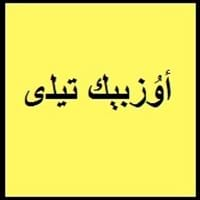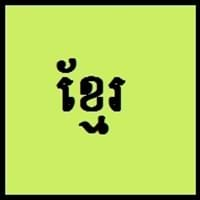Uzbek and Khmer
Countries
Turkey, Uzbekistan
Cambodia
National Language
Afganistan, China, Kazakhstan, Kyrgyzstan, Russia, Tajikistan, Turkmenistan, Uzbekistan
Cambodia, Thailand, Vietnam
Second Language
Not spoken in any of the countries
Not spoken in any of the countries
Speaking Continents
Middle East
Asia
Minority Language
Not spoken in any of the countries
Australia, France, United States of America
Regulated By
Not Available
Not Available
Interesting Facts
- Uzbek is officially written in the Latin script, but many people still use Cyrillic script.
- In Uzbek language, there are many loanwords from Russian, Arabic and Persian.
- Khmer is not the tonal language.
- Khmer language has borrowed philisophical, administrative and technical vocabulary from Sanskrit and Pali.
Similar To
Kazakh and Uyghur Languages
Lao Language
Derived From
Not Available
Pali and Sanskrit Languages
Alphabets in
Uzbek-Alphabets.jpg#200
Khmer-Alphabets.jpg#200
Scripts
Arabic, Cyrillic, Latin
Khmer
Writing Direction
Not Available
Left-To-Right, Horizontal
Thank You
Rakhmat
សូមអរគុណអ្នក (saum arkoun anak)
How Are You?
Qalay siz?
អ្នកសុខសប្បាយទេ
Good Night
Hayirli tun
ND
Good Evening
Hayirli kech
ND
Good Afternoon
Hayirli kun
ND
Good Morning
Hayirli tong
ND
I Love You
Sizni sevaman
ND
Excuse Me
Iltimos! Menga qarang
ND
Dialect 1
Tashkent
Northern Khmer
Where They Speak
Not Available
Australia, Cambodia, France, Thailand, United States of America
How Many People Speak
Not Available
Dialect 2
Afghan
Khmer Krom
Where They Speak
Not Available
Vietnam
How Many People Speak
Not Available
Dialect 3
Ferghana
Western Khmer
Where They Speak
Not Available
Cambodia, Thailand
Native Name
أۇزبېك ﺗﻴﻠی o'zbek tili ўзбек тили (o‘zbek tili)
ភាសាខ្មែរ (bhāsā khmɛ̄r)
Alternative Names
Annamese, Ching, Gin, Jing, Kinh, Viet
Cambodian, Khmer
French Name
ouszbek
khmer central
German Name
Usbekisch
Kambodschanisch
Pronunciation
Not Available
[pʰiːəsaː kʰmaːe]
Ethnicity
Uzbek
Khmer, Northern Khmer
Origin
9th–12th centuries AD
14
Language Family
Turkic Family
Austroasiatic Family
Subgroup
Turkic
Not Available
Branch
Southestern(Chagatai)
Not Available
Early Forms
Chagatay
Proto-Khmer
Standard Forms
Uzbek
Modern Khmer
Language Position
Not Available
Signed Forms
Not Available
Not Available
Scope
Macrolanguage
Individual
ISO 639 6
Not Available
Not Available
Glottocode
uzbe1247
khme1253
Linguasphere
No data available
Not Available
Language Type
Living
Living
Language Linguistic Typology
Not Available
Subject-Verb-Object
Language Morphological Typology
Not Available
Analytic, Isolating
All Uzbek and Khmer Dialects
Most languages have dialects where each dialect differ from other dialect with respect to grammar and vocabulary. Here you will get to know all Uzbek and Khmer dialects. Various dialects of Uzbek and Khmer language differ in their pronunciations and words. Dialects of Uzbek are spoken in different Uzbek Speaking Countries whereas Khmer Dialects are spoken in different Khmer speaking countries. Also the number of people speaking Uzbek vs Khmer Dialects varies from few thousands to many millions. Some of the Uzbek dialects include: Tashkent, Afghan. Khmer dialects include: Northern Khmer , Khmer Krom. Also learn about dialects in South American Languages and North American Languages.
Uzbek and Khmer Speaking population
Uzbek and Khmer speaking population is one of the factors based on which Uzbek and Khmer languages can be compared. The total count of Uzbek and Khmer Speaking population in percentage is also given. The percentage of people speaking Uzbek language is 0.39 % whereas the percentage of people speaking Khmer language is 0.24 %. When we compare the speaking population of any two languages we get to know which of two languages is more popular. Find more details about how many people speak Uzbek and Khmer on Uzbek vs Khmer where you will get native speakers, speaking population in percentage and native names.
Uzbek and Khmer Language Codes
Uzbek and Khmer language codes are used in those applications where using language names are tedious. Uzbek and Khmer Language Codes include all the international language codes, glottocodes and linguasphere.





